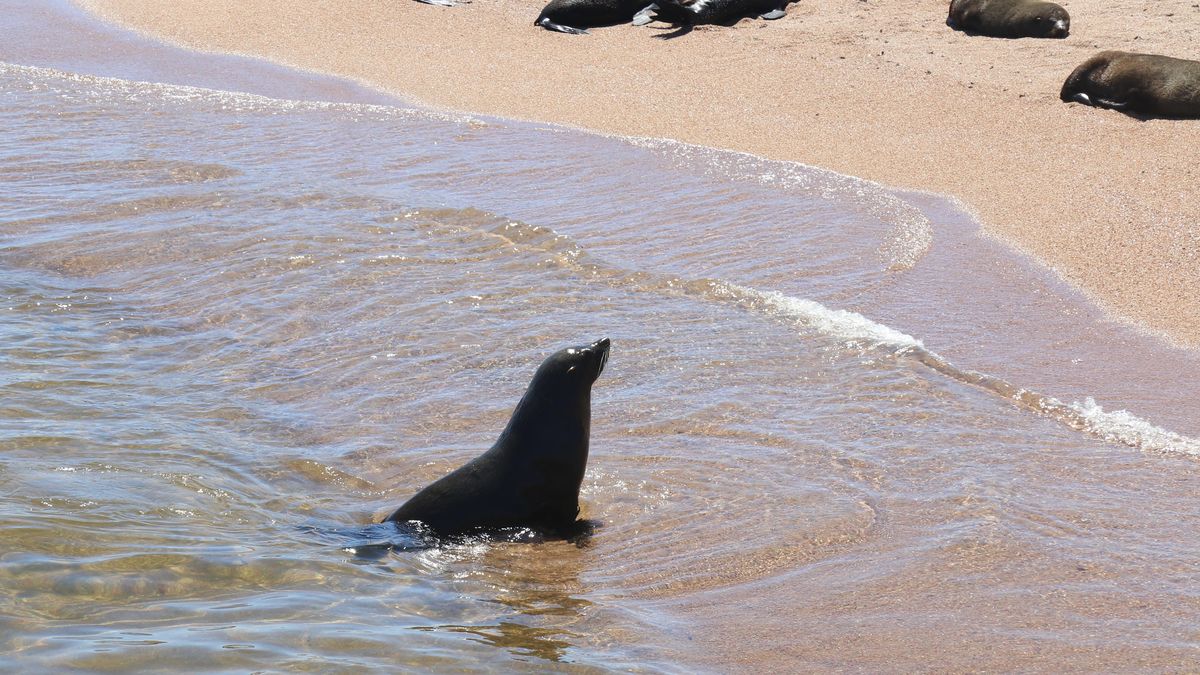The bird flu is once again a matter of concern in Uruguay, although on this occasion due to infections in sea lions that have been registered in recent days in the country, after the confirmation of the first official case by the Ministry of Livestock, Agriculture and Fisheries (MGAP) on Tuesday of this week. According to the portfolio holder, Fernando Mattos, they are already “dozens of dead sea lions” due to avian influenza in four departments.
The figures vary depending on the source consulted and the progress of epidemiological studies prior to the confirmation of new cases. Last Tuesday the MGAP confirmed the first case of bird flu in a wild mammal Hill Beach, Montevideo, while the next day, the NGO SOS Marine Fauna Rescue affirmed the presence of ten infected animals, including sea lions and fur seals, along the entire coast from Montevideo until Rocha.
Meanwhile, and although there is no public statement yet, the general director of Livestock Services of the MGAP, Diego de Freitas, confirmed to the newspaper that so far three animals have been found dead due to bird flu in Punta del Este and three others on the coasts of piriapolis and Pinewood, among a total of 17 deceased sea lions. This would give a total of seven confirmed cases.
In this regard, Minister Mattos confirmed that “dozens of wolves” have already died in four departments —although there is still epidemiological confirmation after swabs of the animals—; although he maintained that “mortality is still low.” In any case, the leader warned that “there is no way to detect the population or the level of viral circulation.”
In Uruguay There are two important colonies of sea lions, that of Cape Polonio in Rocha and Wolf Island in Maldonado. The latter is the largest reserve of this species in South Americaso the concern is even greater.
“What is happening is that we have an infection of the H5 virus, which is similar, I don’t think it is the same one that affected the birds a while ago, but it remains to be verified,” said Mattos, and explained that, for the moment, the MGAP is carrying out swabs and sequencing the virus to find out if there was mutation. It will also consult with other countries that have already gone through similar situations.
A situation that may worry at the regional level
Meanwhile in Uruguay the outbreak is still incipient bird flu in sea lions —specialists expect that the peak will only occur in a month and a half, while MGAP authorities are already monitoring birds and analyzing declaring a health emergency, if necessary—; Argentina is already experiencing a worrying situation on its own coasts from the southern province of Land of Fire until Mar del Plata.
According to the Argentine media, there are already close to 250 dead specimens in thirteen coastal stations. In February of this year, the country had the first report of animals dying from avian flu in poultry; but already end of july The first cases of affected sea lions appeared on the beaches of Tierra del Fuego.
Since then, the epidemic spread along the coast towards the north, until reaching the new outbreaks registered in Necochea, Miramar and Mar del Plata, important beaches in the province of Buenos Aires.
This is a situation that is considered global, since since early 2023 Similar outbreaks are recorded in different coastal points and in animal colonies in the ocean Peaceful. Such was the case with Peru, first, and then Chili, whose alarms went off in the summer due to infections in sea lions while in Argentina and Uruguay The virus was spreading among wild and poultry birds.
In the case of Chile, towards the end of March it already counted 1,535 sea lions killed by bird fluwhile the virus had also spread to the penguins, killing at least 730 specimens.
Given this background, Minister Mattos hopes to be able to resort to the experience of the countries of the region to control and address possible outbreaks in mammals that may occur in the national territory — above all, to prevent their spread to birds and, eventually, to the poultry production system.
Source: Ambito




